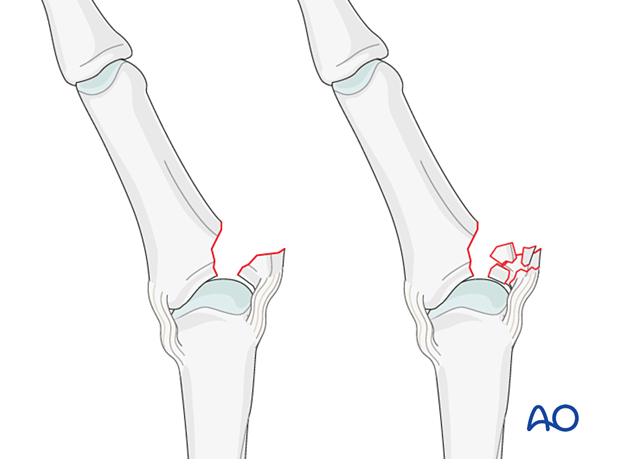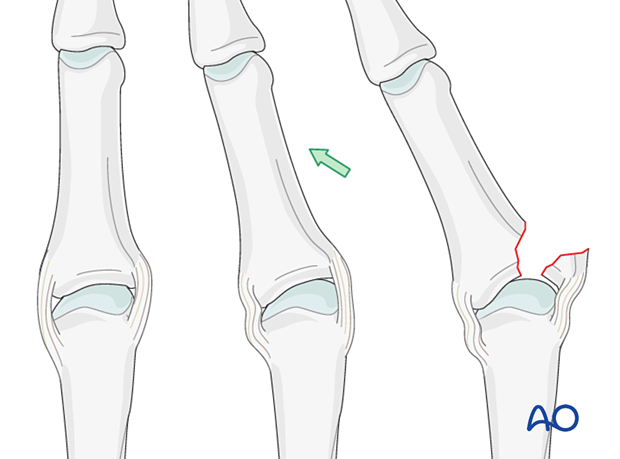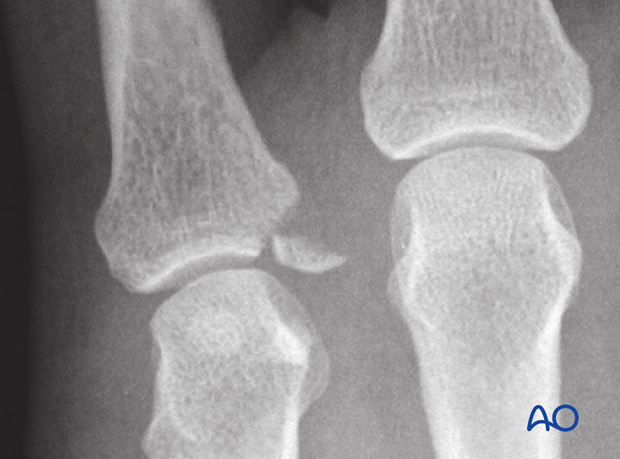Avulsion at the proximal end segment
Definition
In the phalanges of the hand, avulsions usually involve the articular surface and are, therefore, partial articular fractures. They are classified according to AO/OTA as 78.2–5.1.1B, where 2–5 indicates which finger is injured. The fractures may be simple or fragmentary.
An avulsion fracture may be associated with a metacarpophalangeal (MCP) joint dislocation.

Further characteristics
Avulsion fractures result from side-to-side (coronal) forces acting on the finger, putting the collateral ligament under sudden tension. The ligament is usually stronger than the bone, causing the ligament to avulse a fragment of bone at its insertion.
Avulsion fractures result in marked joint instability. Compare with the contralateral finger.

Animation of the injury mechanism

Imaging
Avulsion fractures are usually visible in an AP view x-ray.














